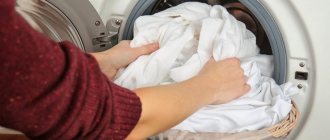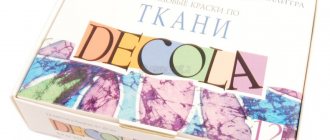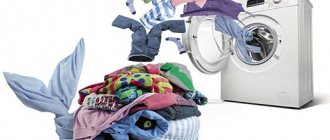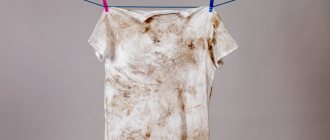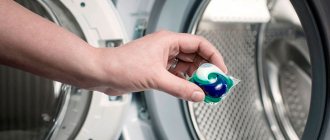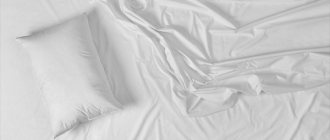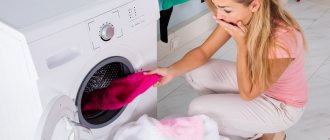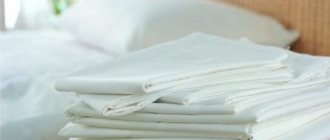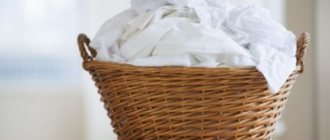White color has been associated with purity and freshness since ancient times. The bedding, dressing gowns, and towels of a good housewife should certainly sparkle like the Alpine peaks and have a pleasant aroma. It is not always possible to bleach laundry at home effectively the first time. However, knowing certain tricks will make it easy to return things to their attractiveness.
Boiling
The boiling method is only suitable for white linen made from natural cotton or linen. Fabrics with a share of synthetics, lace and delicate items are bleached strictly without boiling. And even super-strong cotton fabrics will not thank you for your abuse of boiling water. It is better not to boil for longer than 30-40 minutes over low heat. And try not to get burned!
An alternative to boiling is washing at high temperatures or soaking in boiling water, for example, with Persol bleach.
Chemicals
Most industrial products remove stains from clothing quickly and the first time, if the stains are relatively fresh. To bleach items such as lace lingerie, choose a method according to the directions on the label and the product instructions.
Oxygen bleach
Products with active oxygen act very gently but quickly on different tissues. They can be added regularly during washing. Many stain removers also work on colored fabrics. According to reviews from housewives, Vanish and Frau Schmidt products are the most successful in refreshing the white color.
Vanish
This company has proven itself well: the results of using Vanish Oxi Action bleach are excellent in most cases. Suitable for different fabrics, but it is better to read the instructions.
The product is used sparingly: just one spoon per 3 liters of water, or one soaking.
Frau Schmidt
French bleach tablets: dissolve according to directions to restore whites to their original color. The result is achieved in 15-20 minutes - that's very fast!
White
Bleach really copes with yellowness and grayness, but its components have a negative effect on fabric fibers. Chlorine in the composition can irritate delicate skin, so housewives more often choose oxygen alternatives for washing underwear and children's underwear.
Thus, “Whiteness” for underwear is not the best solution: it can lead to thinning of the fabric and allergic reactions are possible.
Oxygen-containing
This is a new generation of bleaches.
They are able to delicately restore whiteness even without boiling, and are suitable for fabrics of any composition. There are two types of bleaches containing oxygen: in bulk form or in solution form. Their gentle formula allows you to use bleaches as an additive when washing in machines, without requiring pre-soaking. Linen that has turned yellow will become white, and colored items will restore their shade. The cost of bleaching products containing oxygen is significantly higher than chlorine-containing ones.
Folk recipes
Traditional whitening methods are often as effective as industrial means. Take your time, soak the gray laundry for a long time and thoroughly, and then you will be pleased with the result.
Salt and soda
Two main assistants in the household: they will clean, bleach, and even disinfect! Mix salt and baking soda to whiten lace bra and panties:
- Pour baking soda and salt in equal proportions, add warm water - 2 liters.
- Soak dirty laundry in a basin and leave for 2-3 hours.
- Baking soda and salt will eliminate grayness and remove greasy stains.
- After soaking, rinse and wash with powder.
Tip Use both regular and sea salt.
Hydrogen peroxide
Hydrogen peroxide is essentially a mild oxygen bleach. A cheap product from a pharmacy is suitable for short-term soaking of laundry, including synthetics.
How to restore whiteness to underwear:
- For 1 liter of water add 2 tbsp. l. peroxide.
- After washing, place the items in the solution and leave for half an hour.
- Rinse in clean water several times.
Ammonia
Ammonia is suitable for bleaching any type of fabric, including delicate lace. How to prepare the solution:
- Dilute 2 tbsp in 1 liter of warm water. l. ammonia.
- The water temperature for delicate products should not exceed 40 degrees - this is usually written on the labels.
- Place laundry in the solution and leave for 2-3 hours.
- Wash as usual with powder or gel to complete the procedure and remove the ammonia smell.
Important Place the entire product in the solution so that the product works in all areas. If parts of the laundry stick out, yellowish stains will remain on them.
French whitening
A tricky way from French beauty queens. It has been noticed that potassium permanganate in low concentrations refreshes the white color of linen and clothing.
To wash things using the French method, proceed as follows:
- Wet the cloth and lather well. Laundry or baby soap will do.
- Dilute potassium permanganate in a glass of water until deep pink. Strain into a bowl through two layers of cheesecloth or a fine sieve to catch any undissolved crystals.
- Add 6 liters of clean water.
- All that remains is to soak the soapy laundry in the solution and rinse thoroughly.
Lemon juice
Natural lemon juice is a powerful bleach. It destroys grayness, yellowness, greasy stains, and stubborn traces of sweat. How to use:
- Squeeze a glass of lemon juice.
- Pour in 2 liters of boiled water.
- Soak items in a warm solution for 1-2 hours.
Tip: If stains don't go away, try using lemon juice in its pure form. Apply it to marks and wash off after 15 minutes.
Method No. 12. How to bleach white clothes from traces of sweat?
Do you like to wear white things? Love to remove sweat stains too!
How to bleach?
- Fresh traces of sweat can be whitened using laundry soap. It is enough to thoroughly soap the problem areas and leave for 30 minutes, then wash the item.
- For thick fabric, use alcohol and kitchen salt. Pour salt onto the stain and apply alcohol, leaving the item in this state for about 20 minutes. Then wash.
- Veils with yellow sweat stains can be washed in the following solution: 200 ml of ammonia, 200 ml of denatured alcohol, 800 ml of water.
Important!
If you wash white items frequently, traces of sweat will not have time to eat into the structure of the fabric. This will help keep your white item white longer.
Citrus zest
Other parts of citrus fruits are also useful in bleaching. Both lemon juice and zest have the necessary properties. Orange and grapefruit will also come in handy.
The method is a little longer than with juice, but it also works:
- Remove the skin from the fruit.
- Boil it in boiling water for 20 minutes.
- Cool slightly and add a couple of tablespoons of hydrogen peroxide.
- Soak your laundry in the broth. The result will be noticeable after 3 hours. If the fabric allows it, then use a hot solution; if not, wait until it cools down to 40 degrees.
Milk
Simple products work wonders: for example, milk easily removes grayness and even blue ink. Just soak your laundry in it and wait. To speed up the results, periodically wipe the stains and replace the milk with fresh milk.
White vinegar
Housewives use vinegar to rinse clothes and preserve their color. The product can restore the whiteness of panties in several applications:
- Mix a glass of vinegar and 1 liter of water.
- Soak the laundry in the solution for several hours. Soaking overnight is allowed.
- After soaking, wash the product as usual.
Boric acid
If you have boric acid in your household, it is also suitable for delicate whitening of underwear. Use the substance in powder form:
- For 3 liters of water - 50 g of boric acid.
- Soak for at least 1 hour.
- Wash as usual.
Aspirin
An unexpected pharmaceutical product for whitening lace and mesh underwear:
- Place 5 aspirin tablets in a basin of warm water. Let it dissolve and soak the bra for 3-4 hours.
- A light wash in soapy water will secure the result.
Types of fabrics and methods of bleaching them
When bleaching, it is important to take into account the composition of the laundry fabric, otherwise the result will be disastrous. Expensive lace and budget cotton are washed in different ways. Synthetic underwear also requires a special approach.
Synthetics
Choose industrial products whose instructions indicate that they are suitable for washing synthetics. Do not use "Whiteness" and boiling. Among the folk remedies, ammonia, peroxide, salt and soda are suitable.
Silk
Satin and silk are vinegar tolerant. Laundry soap, ammonia and peroxide are gentle.
Lace
Lace lingerie is the most delicate. Washing in a drum makes it easily deformed. Therefore, hand wash and soak only. Avoid friction, twisting and chlorine products. What is suitable for lace underwear: aspirin, ammonia, peroxide, lemon, laundry soap.
Cotton
The most durable types of underwear are made from cotton. Pure white panties and bra can even be boiled briefly.
Nuances when bleaching clothes made from different materials
Clothes made from different fabrics are bleached differently. Some materials are highly sensitive and are destroyed when exposed to certain components.
Synthetics
Clothes made of synthetic material are considered delicate. The washing rules will be as follows:
- clothes should not be boiled or soaked in compounds containing chlorine;
- The washing water is not too hot;
- after bleaching procedures, you should not wring out things;
- Drying things in the open sun should be avoided.
For synthetic clothing, compositions based on laundry soap, salt, soda or ammonia are considered safe.
Cotton and linen
To clean items made from cotton or linen, use baking soda or salt. It is permissible to add components during machine washing. The water should not be made too hot. Soaking in regular washing powder is effective.
Wool and silk
For wool and silk fabrics, it is recommended to prepare the following composition: dissolve 38 g of washing powder in 6 liters of water, 35 ml of hydrogen peroxide and soda, then add 125 g of salt. Soak clothes in a well-mixed mixture for 2.5 hours.
How to keep your laundry white and in shape
Whitening delicate laundry is much more difficult than caring for it daily. Typical mistakes housewives make in caring for underwear and useful tips:
- Washing in a common pile. Do not mix underwear with clothes of contrasting colors.
- When washing your bra, always fasten it to prevent the hooks from damaging the fabric.
- Do not use high temperatures for bleaching; they often lead to the opposite result. It is better to choose a bleaching agent and soak the product for several hours.
- Many housewives still ignore washing covers. But these accessories protect the linen from stretching, wrinkles and other deformations.
- To ensure effective bleaching, wash your clothes with powder or soap before immersing them in the solution.
- Give preference to hand washing.
- Buy several sets of black, nude and colored underwear so you don't have to wear white all the time.
Turn clothing care into a ritual to always feel comfortable in clean and shiny clothes. If it was not possible to restore whiteness the first time, do not despair and repeat the procedure. In some cases, a combination of methods helps. The key to success is patience, the right product, suitable washing temperatures and, of course, proper initial care.
Whitening white bed linen in a machine
Over time, due to hard water containing a significant amount of salts, the laundry takes on an untidy grayish or yellowish tint. In addition, the fabric loses its attractiveness due to improper storage. Leaving the product in a damp room for a long time or drying the bedding in the sun for too long will result in damage to the material. Washing such large items is not easy; the most convenient way is to bleach the laundry in an automatic washing machine.
No boiling
Just a couple of decades ago, boiling was considered the only method of bleaching. This is a labor-intensive, lengthy, rather dangerous process that significantly reduces the service life of the laundry. Nowadays, a combination of innovative products and special washing modes allows things to be restored to their original purity. How to bleach white linen in an automatic washing machine:
- choose the right product;
- pre-soak the product;
- pay attention to the washing mode and temperature;
- dry the product properly.
To clean a sheet or duvet cover automatically, proper selection of household chemicals is key. The use of optical brightener shows good results. It is suitable for creating a visual glow effect, but does not have a real brightening effect. In addition, such products are not able to remove intense stains. Optical brightener is worth purchasing for items that have lost their shine due to long-term storage. Oxygen formulations are suitable for delicate and intensive cleansing. They are used for any type of fabric, but are expensive.
It is strictly forbidden to use chlorine-containing bleaches to clean the machine. Products such as Whiteness can negatively affect the operation of equipment. In addition, regular use of chlorine causes thinning and yellowing of bedding. Whiteness should only be used when necessary, for example for disinfection.
If there is intense dirt or a pronounced gray color, you should first soak the laundry in warm water. Soaking time can range from 2 to 12 hours depending on the product used and the desired result. You can add ready-made bleach, soda, hydrogen peroxide, and citric acid to the water. On severe stains, it is additionally allowed to apply a stain remover. Soaking should not be neglected even if there is an unpleasant odor: prolonged exposure to water helps to get rid of mustiness.
The washing mode is selected depending on the type of material from which the laundry is made. The best results are achieved by high-temperature programs that involve intense movement of the machine drum. However, modes such as “cotton”, “bed linen”, “linen” are suitable only for natural fabrics that are not subject to shrinkage and shedding. To care for synthetic fabric or silk, it is better to choose a medium temperature and set a long wash cycle. In addition, the number of revolutions per minute should be minimized.
At the end of the procedure, the laundry should be hung out in the open air or in a clothes dryer. It is not recommended to place products in a humid room, near artificial heat sources, or keep them in the sun for a long time. In summer, it is best to do laundry in warm, clear weather in the early morning or before sunset. It is recommended to ensure that the laundry does not become damp or wet in the rain or snow.
